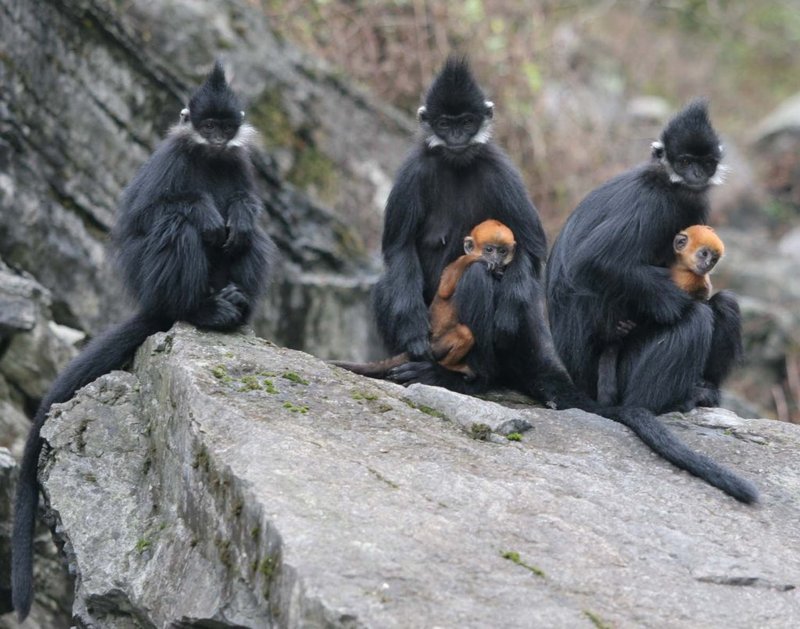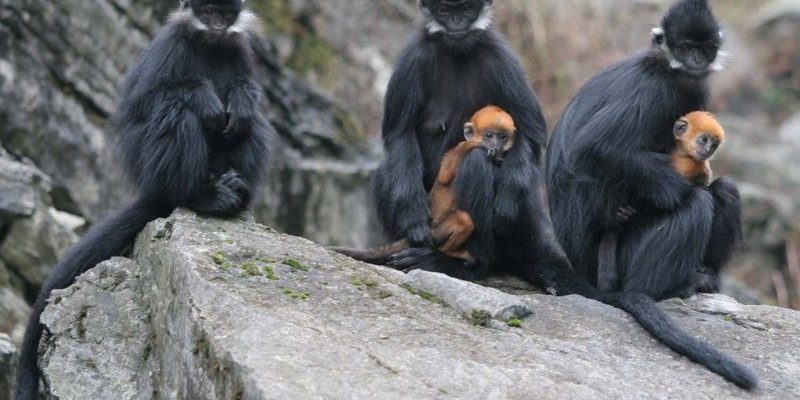
Imagine a lush forest, where langurs leap from branch to branch, their chattering sounds echoing through the canopy. Unfortunately, this vibrant scene is under threat due to deforestation, habitat loss, and hunting. In this article, we’ll dive deep into the status of langurs, explore different species, and look at what’s being done (or could be done) to help them. Let’s break it down together.
Understanding Langurs and Their Habitat
Langurs belong to the *Colobus* family, and they’re primarily found in parts of India and Southeast Asia. These monkeys are herbivorous, meaning they munch on leaves, fruits, and flowers. Their long limbs and strong tails make them agile climbers, perfectly adapted to life high up in the trees. But why is their habitat so crucial?
Here’s the thing: langurs play a significant role in their ecosystem. By consuming fruits and leaves, they help with seed dispersal. This process is vital for maintaining forest health. When langurs move from tree to tree, they not only find food for themselves but also contribute to the growth of new plants. So, if langurs are struggling, it could affect the entire forest, which is a big deal for all the creatures living there.
However, many langur species are losing their homes due to various human activities. Urbanization, logging, and agricultural expansion are just a few reasons forests are disappearing. Without their natural habitat, langurs face increased competition for food and shelter, which puts their survival at risk.
Dissecting the Different Langur Species
Langurs aren’t a one-size-fits-all kind of monkey. There are several species, each with unique characteristics and conservation statuses. Here are a few notable ones:
- Hanuman Langur: Commonly found in northern India, these monkeys are adaptable and can thrive in urban areas, making them relatively less endangered.
- Tibetan Black-Langur: This species is quite rare and is primarily found in the Himalayan region. Their population is declining due to habitat loss and poaching.
- Assamese Langur: Native to northeastern India, this species faces grave threats from deforestation and hunting. Their population is rapidly decreasing.
You might be curious why some langurs are doing better than others. It often comes down to their ability to adapt. For instance, Hanuman langurs have learned to live near humans, which helps their survival. But for species like the Assamese langur, the outlook isn’t so bright. When their forests are cut down, they lose their homes and food sources, leading to a steep decline in their numbers.
Factors Contributing to Langur Endangerment
Langurs face several threats that impact their survival. Understanding these factors is essential for grasping why conservation efforts are needed. Here are a few pivotal challenges:
1. Habitat Loss: Deforestation for agriculture and urbanization is one of the biggest threats to langurs. As their homes disappear, so does their chance for survival.
2. Hunting and Poaching: In some regions, langurs are hunted for their meat and fur. Illegal wildlife trade poses a serious risk to certain species.
3. Human-Wildlife Conflict: As humans encroach on langur territory, conflicts arise. Langurs may raid crops, leading to retaliation from farmers, which sometimes ends tragically for the monkeys.
These factors create a perfect storm that endangers the survival of various langur species. Honestly, it’s heartbreaking to think about how interconnected nature is, and how the loss of one species can ripple throughout the ecosystem.
Conservation Efforts for Langurs
The good news is that people are taking action to help langurs. Many organizations and governments are working together to protect these primates and their habitats. Here are some key efforts in play:
– Protected Areas: Establishing national parks and reserves is crucial. These areas help safeguard langur habitats from deforestation and human exploitation. Places like Kaziranga National Park in India serve as vital sanctuaries for various species, including langurs.
– Community Awareness Programs: Educating local communities about the importance of langurs in the ecosystem can encourage conservation efforts. When people understand why protecting these monkeys matters, they’re more likely to support preservation initiatives.
– Anti-Poaching Initiatives: Many organizations are working to reduce poaching through patrols and community involvement. These efforts aim to decrease the illegal wildlife trade that threatens langurs.
Conservation isn’t a one-size-fits-all solution, but every little bit helps. When communities unite for a cause, it can lead to meaningful change.
Global Perspectives on Langur Conservation
Langurs aren’t just a local concern; they represent a global biodiversity issue. Different countries approach the conservation of langurs and their habitats in various ways. Here’s a snapshot of how different regions are handling the situation:
– India: As home to several langur species, India has implemented numerous conservation policies. National parks and wildlife sanctuaries protect their habitats, but challenges remain due to human populations expanding into these areas.
– Nepal: Conservation organizations work alongside the government to monitor langur populations. Innovative community engagement strategies have shown promise in reducing poaching and protecting habitats.
– Southeast Asia: Countries like Indonesia and Malaysia face significant biodiversity loss due to deforestation. Here, conservation groups are pushing for stronger laws and better land management to protect not only langurs but the entire ecosystem.
It’s crucial to realize that conservation is a global responsibility. When countries cooperate and share resources, knowledge, and strategies, everyone benefits. Langurs can thrive once more, and so can the forests they call home.
How You Can Help Langurs
If you’re feeling inspired to make a difference, you might wonder how you can help langurs from wherever you are. Here are a few simple yet impactful actions you can take:
– Support Conservation Organizations: Donating to or volunteering with organizations that focus on wildlife protection can make a real difference. Every little bit counts!
– Spread Awareness: Talk about langurs and their plight on social media or within your community. The more people know, the more likely they’ll want to help.
– Reduce Your Environmental Impact: Simple lifestyle changes, like using less plastic or supporting sustainable products, can contribute to a healthier planet and safer habitats for langurs and other wildlife.
Taking these small steps can create a ripple effect that leads to larger changes. Remember, protecting langurs is about safeguarding our planet together.
The future of langurs hangs in a delicate balance. While their situation is dire, hope remains. Conservation efforts are gaining momentum, and public awareness is growing. If we all play a part in protecting these incredible creatures, we can ensure they continue to swing through the treetops for generations to come.
Langurs remind us of the beauty and complexity of nature. They’re not just monkeys; they’re vital pieces of a larger puzzle. So, let’s commit to helping ensure their survival as part of our responsibility to the Earth. Together, we can make a meaningful impact.

